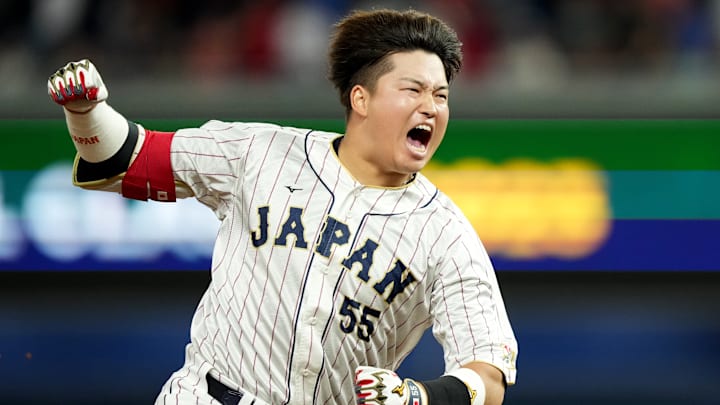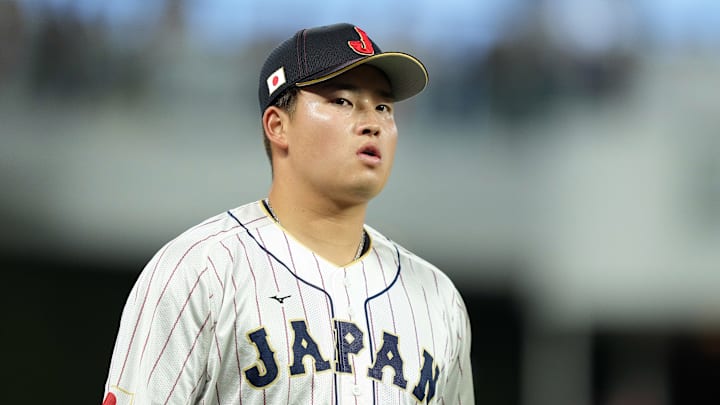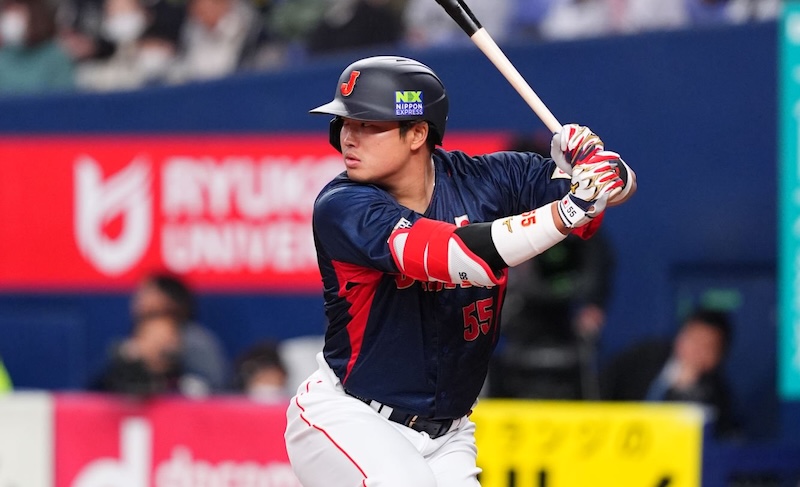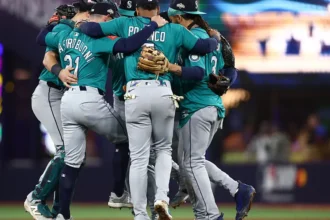The Boston Red Sox entered this offseason facing considerable pressure to reshape a roster that had fallen short of expectations in recent years, particularly in the American League East, where the margin for error remains razor-thin. The organization recognized early that staying competitive in a division loaded with pitching talent, power hitting, and well-constructed lineups would require bold, decisive moves. They have already taken a meaningful first step by upgrading the rotation, an area that desperately needed additional stability and veteran presence. That first significant domino came in the form of a trade with the St. Louis Cardinals that brought in veteran right-hander Sonny Gray, one of the most accomplished pitchers available. Gray’s arrival gives Boston an experienced arm capable of anchoring the rotation, mentoring young pitchers, and providing a level of reliability that the Red Sox sorely lacked throughout last season.

However, as important as the acquisition of Gray may prove to be, his addition only addressed one side of the team’s offseason agenda. The other arguably more complicated task for the front office involves strengthening the lineup. Boston’s offense, while showing flashes of potential, lacked consistent power production, particularly from the corner infield spots. Those positions have historically been a source of thump for the franchise, with past stars like David Ortiz (who also saw time at first base earlier in his career), Mike Napoli, and Manny Ramirez providing big-bat energy in various roles. But in its current form, the lineup still feels incomplete, and if the Red Sox want to compete with the upper echelon of the league, they will need another middle-of-the-order force capable of changing a game with one swing.
One potential name that has hovered around the organization’s long-term plans is Alex Bregman, a star third baseman known for his blend of power, plate discipline, and postseason experience. Bregman, however, presents a complicated situation. Although he is one of the most reliable corner infielders on the market, there remains a very real chance that Boston may not be able to retain him or even prioritize him going into the next season. Whether due to financial considerations, strategic direction, or mutual interest from other teams, Bregman represents a possibility rather than a guarantee. That uncertainty forces the Red Sox to broaden their search and explore alternative options who could provide both offensive firepower and positional flexibility.

Among the most intriguing candidates is Japanese superstar Munetaka Murakami, one of the most dominant international sluggers to emerge in recent memory. Murakami’s profile has garnered widespread attention, and the Red Sox are one of the teams heavily linked to him. His combination of age, raw power, and impressive production in Japan’s Nippon Professional Baseball (NPB) league makes him a unique fit for any team looking to make a splash. According to Andy McCullough of The Athletic, Boston stands out as a logical landing spot for the 26-year-old phenom. McCullough explained that his prediction of Murakami signing with the Red Sox was partly driven by a “process of elimination,” as several other major-market clubs either don’t have a clear need for him or are focused on different priorities.
For example, the New York Mets, run by president of baseball operations David Stearns, have been vocal about improving run prevention an area where Murakami does not necessarily elevate the team. While his bat is undeniable, his defense at the corners is not seen as an upgrade over first baseman Pete Alonso, who is known more for his power than his glove. Meanwhile, the Los Angeles Dodgers, perennial spenders who seem to be in the mix for every elite hitter, already have a crowded lineup with established stars at both corner infield positions and designated hitter. On the East Coast, the Philadelphia Phillies are expected to extend or re-sign one of their own key sluggers likely referring to players such as Bryce Harper or another bat McCullough hinted at making it less likely they pursue Murakami aggressively.
This combination of other teams’ needs and roster structures creates a clearer path for Boston. The Red Sox have both the positional space and the organizational motive to chase Murakami seriously. He fits the profile of the type of transformative bat the team has been missing: young, powerful, and capable of injecting fresh excitement into the lineup. At the age of 26, he is much younger than most free agents who hit the market with similar credentials, which increases his long-term value and aligns with Boston’s desire to build a competitive core for years to come.

Murakami’s numbers in Japan speak for themselves. His power is not just impressive it is elite. He has displayed an ability to hit for distance and volume, consistently ranking among the league leaders in home runs. However, like many power-first hitters transitioning to MLB, there are questions about how his contact skills will translate to major-league pitching. MLB fastballs are generally harder, breaking pitches sharper, and scouting reports more detailed, so even highly accomplished NPB hitters can take time to adjust. Nonetheless, the upside is undeniable. Murakami’s swing, bat speed, and sheer strength give him the potential to become a cornerstone in Boston’s offense.
Financially, signing Murakami will not be a minor investment. Jim Bowden of The Athletic recently projected that the slugger could land a $160 million contract, a figure that places him squarely within Boston’s expected spending power. The Red Sox have reset their payroll in recent seasons, moved on from several veteran contracts, and are positioned to make a major financial commitment if they deem the player worth the investment. A contract of this magnitude signals the belief that Murakami could become a long-term franchise piece, not just a short-term fix.

Of course, pursuing an international player of Murakami’s stature carries inherent risk. The transition from NPB to MLB, while successful for many stars such as Shohei Ohtani, Hideki Matsui, and Seiya Suzuki, is not always seamless. Differences in strike zones, pitch sequencing, defensive demands, and cultural adjustments can impact performance. The Red Sox, however, appear willing to accept that risk given the tremendous upside Murakami brings. His ability to play both first base and third base adds to his value, especially for a team still sorting out the optimal configuration of its infield.
Another factor that works in Murakami’s favor is Fenway Park itself. The ballpark’s dimensions especially the short distance to the Green Monster in left field have historically boosted right-handed hitters. But even for left-handed hitters like Murakami, the park offers opportunities for power production. The deep right field and inviting bullpen area can turn high-trajectory swings into home runs or triples. Players who hit the ball as hard as Murakami tends to fare well regardless of venue, but Fenway could amplify his strengths further.

If the Red Sox were able to land Murakami, the impact on the lineup would be immediate and profound. Adding a slugger capable of hitting 30 to 40 home runs at his peak would transform an offense that often struggled to compete with high-powered divisional rivals such as the Yankees and Blue Jays. His presence would also provide protection for other hitters, giving players like Rafael Devers more favorable pitches as opposing pitchers would have to navigate multiple power threats instead of focusing their attention on Devers alone.
Furthermore, signing Murakami would send a strong signal to the fanbase and to the rest of the league that the Red Sox are committed to returning to contention. Over the past few years, the team has faced criticism for perceived hesitancy in free agency and for decisions that some fans viewed as cost-cutting rather than competitive. Adding a player with Murakami’s star power and long-term potential would counter that narrative and generate excitement heading into the new season.
In summary, Boston has already strengthened its roster with the addition of Sonny Gray, but the job is far from finished. The next crucial step involves upgrading an offense that desperately needs more power, especially at the corner infield spots. While Alex Bregman remains an option, the most compelling and potentially impactful target may be Munetaka Murakami. His exceptional power, youth, positional versatility, and projected availability make him a prime candidate to help reshape the Red Sox lineup. Though signing him requires a significant financial investment and comes with notable risks, the reward should he successfully transition to MLB could be transformative. If Boston finds a way to bring Murakami to Fenway Park, the team would take a major stride toward reestablishing itself as a true contender in the American League.





